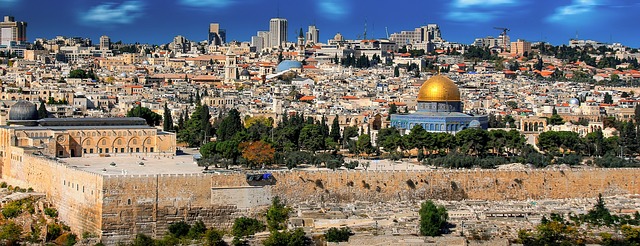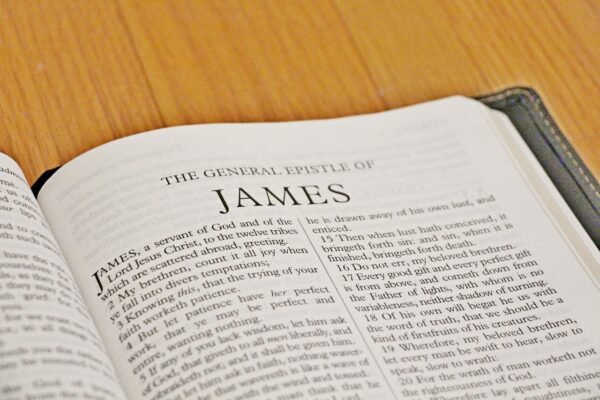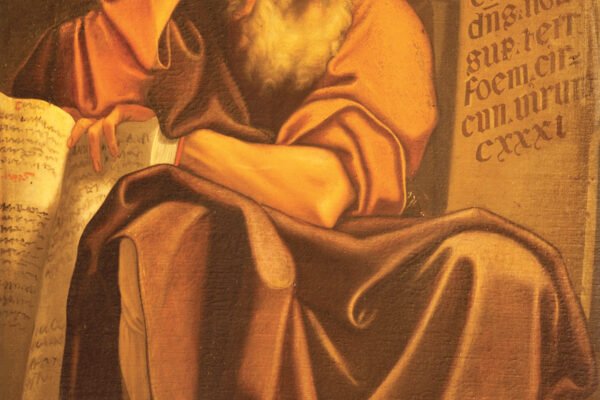The prophet Haggai wrote:
“For thus says the Lord of hosts: ‘Once more (it is a little while) I will shake heaven and earth, the sea and dry land; and I will shake all nations, and they shall come to the Desire of All Nations [Messiah], and I will fill this temple with glory . . . The glory of this latter temple shall be greater that the former . . . And in this place I will give peace’” (2:6, 7, 9).
How would this be possible? The prophet had already asked, “Who is left among you who saw this temple in its former glory? And how do you see it now? In comparison with it, is it now in your eyes as nothing?” (v. 3). How could the latter be greater?
Promise of Messiah
Ezekiel had predicted the destruction of Jerusalem and the first temple, the captivity, and Judah’s eventual demise as a nation: “and it shall be no more, until he comes whose right it is” (21:27, KJV). Following the captivity, the rebuilt temple lacked the splendor of the first, constructed by King Solomon.
From Genesis to Malachi, the Scriptures are rich with promises of the Messiah to come. From the prophecy of a woman’s Seed (Genesis 3:15) to Malachi’s promise of His coming as a refiner’s fire and launderers’ soap (3:1-3), the Old Testament teems with prophetic utterances regarding Messiah’s coming.
Looking for Messiah
Author Mark Eastman wrote The Search for the Messiah. After the captivity, according to his research, the rabbis searched the Scriptures diligently for clues to the coming of the promised One. They discovered what they concluded to be a prophetic finger pointing to sometime within the first half of the first century C.E. Their study concentrated, in part, on the text of Genesis 49:8-12, with emphasis on verse 10: “The scepter shall not depart from Judah, nor a lawgiver from between his feet, until Shiloh [Messiah] comes; and to Him shall be the obedience of the people.”
Eastman concluded that this verse could be restated as follows:
“The [national identity of Judah, which includes the right to enforce mosaic law, including the right to administer capital punishment upon the people, as called for in the Torah] shall not depart from [the southern kingdom (Judah)], nor a lawgiver from between his feet, until Shiloh [the Messiah] comes; and to him shall be the obedience of the people” (Chapter 6, “The Time of Messiah’s Coming,” https://www.blueletterbible.org/Comm/eastman_mark/messiah/sfm_06.cfm).
Eastman’s research further revealed that the right to execute capital punishment had been taken away from Judea and given to Caponius, as recorded by Josephus in Wars of the Jews (Book 2, Chapter 8):
“And now Archelaus’ part of Judea was reduced into a province, and Caponius, one of the Equestrian order of the Romans, was sent as a procurator, having the power of life and death put into his hands by Caesar!”
Eastman said that with the removal of this power from the Sanhedrin, “In the minds of the Jewish leadership, this event signified the removal of the scepter or national identity of the tribe of Judah!”
He further quotes from the Jerusalem Talmud, Sanhedrin, folio 24: “A little more than forty years before the destruction of the Temple, the power of pronouncing capital sentences was taken away from the Jews.”
Shiloh’s arrival
The temple was destroyed in AD 70. Take away the forty-plus years, and you come to the period of our Lord’s ministry, death, and resurrection. Members of the Sanhedrin mourned the loss of the scepter’s departure and the fact that, to their knowledge, Messiah had failed to come. Where had they gone wrong in their calculations?
Eastman got it right when he said: “While the Jews wept in the streets of Jerusalem, there was growing up in the city of Nazareth, the young son of a Jewish carpenter, Jesus of Nazareth. The inescapable conclusion was that Shiloh had come – Only then was the scepter removed!”
The presence of the Lord Jesus in the temple as a twelve-year-old, His ministry both then and later, and His driving the moneychangers out of this sacred place served to bring the greater glory of His presence into the second temple. When Jesus died, the hand of God reached down and ripped the temple curtain from top to bottom. He had “broken down the middle wall of separation [between Jew and Gentile] . . . thus making peace . . . [reconciling] them both to God in one body through the cross . . . And He came and preached peace to you who were afar off and to those who were near. For through Him we both have access by one Spirit to the Father” (Ephesians 2:14-18), thus fulfilling Haggai’s prophecy.
Christ enthroned
The kingdom reign will have yet greater glory when Christ occupies the throne. At the end of the thousand years when death, the last enemy, has been destroyed, He will turn the kingdom over to the Father and be subject to Him, that God may be “all in all” (1 Corinthians 15:28).
In the Spirit, John the Revelator saw
the holy Jerusalem, descending out of heaven from God having the glory of God. . . . But I saw no temple in it, for the Lord God Almighty and the Lamb are its temple. The city had no need of the sun or of the moon to shine in it, for the glory of God illuminated it. The Lamb is its light (Revelation 21:10, 11, 22, 23).
The greatest glory!








